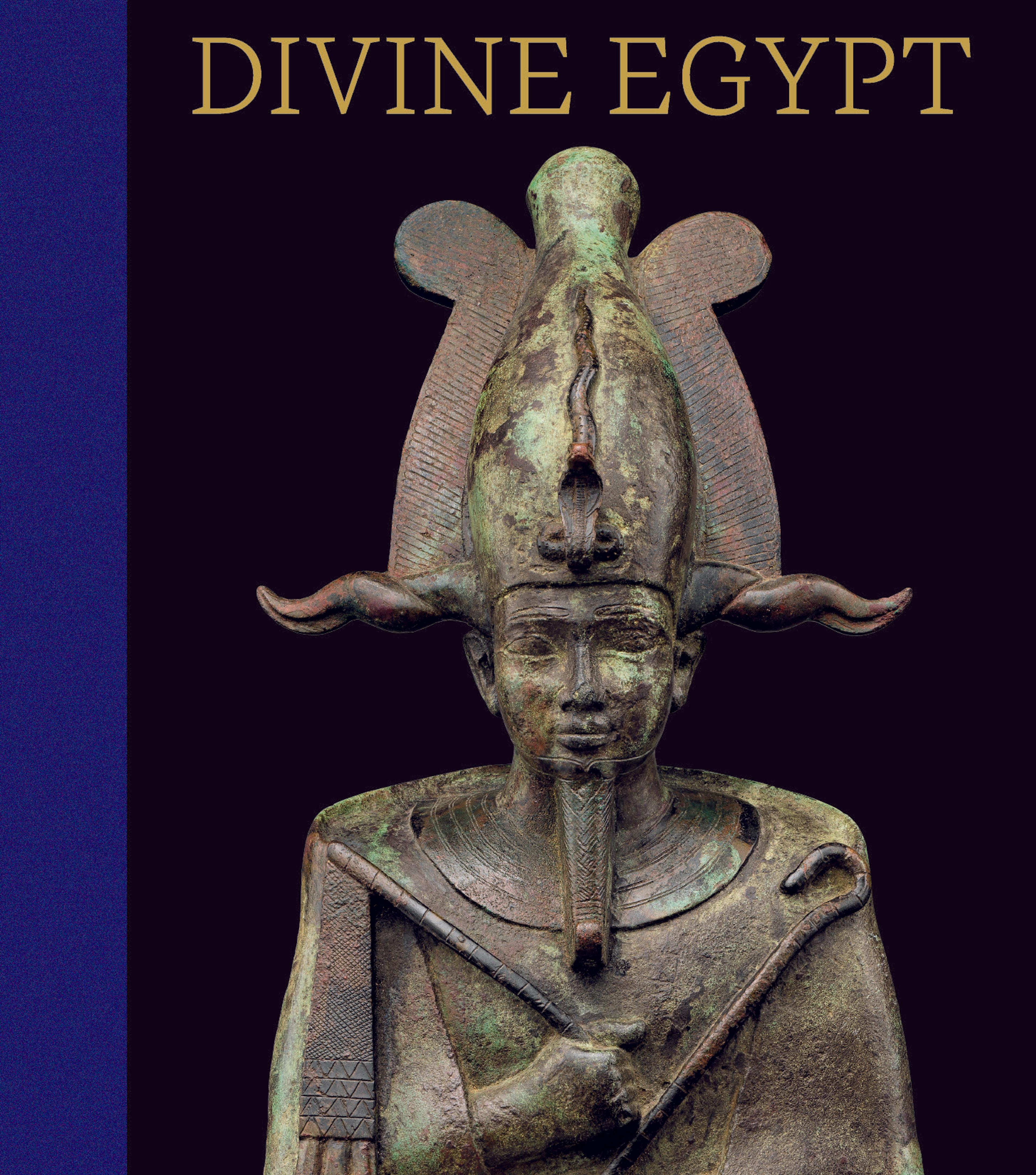English
Cat Statuette intended to contain a mummified cat
The cat was the sacred animal of the goddess Bastet, a great and benevolent Egyptian goddess. For the Egyptians, the goddesses Bastet and Sakhmet were two aspects of divine power. Sakhmet, the lioness, represented dangerous, potentially destructive forces. Bastet, the feline of the house, incorporated the benevolent aspects of a deity that could be pacified by rituals.
In Bastet's honor, mummified cats, sometimes in impressive bronze or wooden containers, were donated at her temples, of which the most important were located at Bubastis and Saqqara. The mummies were then buried within her temple precincts.
This statue was the container for a mummified cat. Clearly this is not an ordinary cat. Its pierced right ear once held a gold ring (now lost), and suspended from its incised necklace is a wedjat-eye pendant. An impression of majesty is created by the cat's erect and dignified pose and the alert expression of the eyes. The sleek muscles and long graceful legs convey a sense of controlled power.
Cats were first domesticated by the Egyptians in the Middle Kingdom for their mouse-hunting abilities. By New Kingdom times they had also become household companions. In tomb scenes they frequently appear seated beneath the chairs of their owners or on sporting boats in the Nile marshes, where they flush out birds for their masters.
In Bastet's honor, mummified cats, sometimes in impressive bronze or wooden containers, were donated at her temples, of which the most important were located at Bubastis and Saqqara. The mummies were then buried within her temple precincts.
This statue was the container for a mummified cat. Clearly this is not an ordinary cat. Its pierced right ear once held a gold ring (now lost), and suspended from its incised necklace is a wedjat-eye pendant. An impression of majesty is created by the cat's erect and dignified pose and the alert expression of the eyes. The sleek muscles and long graceful legs convey a sense of controlled power.
Cats were first domesticated by the Egyptians in the Middle Kingdom for their mouse-hunting abilities. By New Kingdom times they had also become household companions. In tomb scenes they frequently appear seated beneath the chairs of their owners or on sporting boats in the Nile marshes, where they flush out birds for their masters.
Artwork Details
- Title: Cat Statuette intended to contain a mummified cat
- Period: Ptolemaic Period
- Date: 332–30 BCE
- Geography: From Egypt
- Medium: Leaded bronze
- Dimensions: H. 27.4 × W. 11.9 × D. 23.3 cm, 2.5 kg (10 13/16 × 4 11/16 × 9 3/16 in., 5.5 lb.); With tangs: H. 32 cm (12 5/8 in.); With mount: 3.7 kg (8.2 lb.)
- Credit Line: Harris Brisbane Dick Fund, 1956
- Object Number: 56.16.1
- Curatorial Department: Egyptian Art
Audio
1116. Kids: Cat Statuette
0:00
0:00
We're sorry, the transcript for this audio track is not available at this time. Please email info@metmuseum.org to request a transcript for this track.
More Artwork
Research Resources
The Met provides unparalleled resources for research and welcomes an international community of students and scholars. The Met's Open Access API is where creators and researchers can connect to the The Met collection. Open Access data and public domain images are available for unrestricted commercial and noncommercial use without permission or fee.
To request images under copyright and other restrictions, please use this Image Request form.
Feedback
We continue to research and examine historical and cultural context for objects in The Met collection. If you have comments or questions about this object record, please contact us using the form below. The Museum looks forward to receiving your comments.
